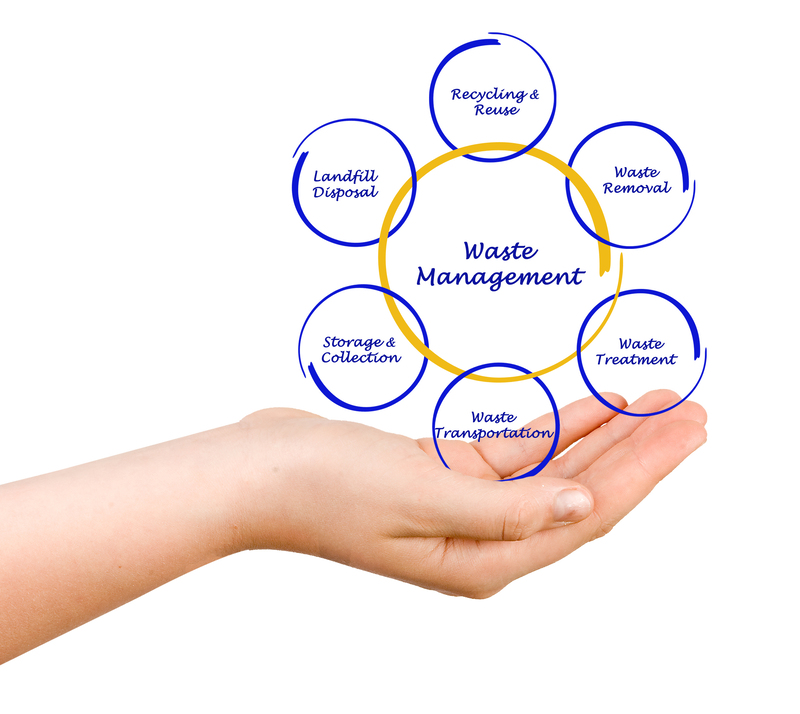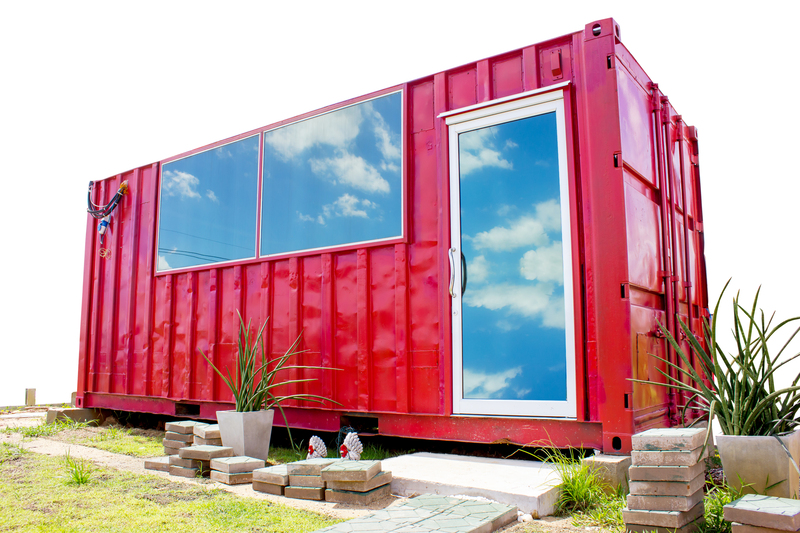Creative and Practical Steps for a Waste-Free Home
Reducing waste at home has evolved from a niche lifestyle choice to a global movement. Living a waste-free or zero-waste lifestyle isn't just an environmental concern--it's a way to save money, improve health, and create a more sustainable future. In this comprehensive guide, we'll walk you through creative and practical steps for transforming your household into a low-waste or waste-free home. From the kitchen to your bathroom and beyond, you'll discover actionable tips, eco-friendly product suggestions, and resourceful strategies to minimize and manage household waste.
Why Adopt a Waste-Free Home Lifestyle?
Did you know the average person produces over 4 pounds of waste daily? Most of it ends up in landfills, contributing to greenhouse gas emissions and pollution. By transitioning towards a waste-free household, you can:
- Lower your environmental footprint
- Save money by reducing unnecessary purchases
- Promote healthier living by avoiding harmful plastics and chemicals
- Create a more organized and clutter-free home
Small changes add up over time, helping you and your family make a significant positive impact on the planet.

Core Principles of a Waste-Free Home
Embracing a waste-free living lifestyle starts with understanding a few core principles, commonly known as the 5 R's:
- Refuse: Say no to what you don't need.
- Reduce: Minimize what you do use.
- Reuse: Opt for alternatives you can use again.
- Recycle: Process items that can't be reused.
- Rot: Compost organic materials that cannot be recycled.
By following these principles, you'll move closer to a zero-waste home, making smarter choices and learning new habits that last a lifetime.
Creative Steps to a Waste-Free Kitchen
1. Shop Smart--Bulk and Local
- Bring your own reusable bags, produce sacks, and containers to stores and markets.
- Buy in bulk to avoid single-use packaging and save money.
- Purchase from local farmers' markets, which often allow packaging-free shopping and support regional growers.
2. Rethink Food Storage
- Swap out plastic wrap for silicone covers, beeswax wraps, or upcycled jars.
- Store leftovers in glass containers or stainless steel lunchboxes, which are durable and non-toxic.
3. Compost Everything You Can
- Set up an indoor compost bin or outdoor compost heap for food scraps, coffee grounds, and tea bags.
- Compostable waste can nourish houseplants or your garden, completing the food cycle sustainably.
4. Cook Creatively with Leftovers
- Use apps or search online for leftover recipes to minimize food waste.
- Turn vegetable scraps into homemade broth and fruit peels into zesty infusions or cleaning vinegar.
5. Avoid Disposable Products
- Switch to cloth napkins, sponges made from natural fibers, and durable cleaning brushes.
- Choose bar soap for dishwashing instead of liquid soap in plastic bottles.
These practices will cut down on your kitchen waste, helping you build a truly waste-free home from the heart of your household.
Practical Steps for a Zero-Waste Bathroom
1. Opt for Package-Free Toiletries
- Choose solid shampoo, conditioner bars, and bar soaps without packaging.
- Look for brands that offer refill stations or bulk options for liquid products.
2. Reusable Alternatives for Personal Care
- Replace disposable cotton rounds with washable fabric pads.
- Switch to a safety razor with metal blades instead of plastic disposables.
- Use bamboo toothbrushes and biodegradable dental floss.
3. Eco-Friendly Hygiene Products
- Consider menstrual cups or reusable cloth pads for menstruation needs.
- Select toilet paper made from recycled or rapidly renewable materials, or try a bidet attachment for less toilet paper usage.
4. Minimal, Natural Cleaners
- DIY cleaning sprays using vinegar, baking soda, essential oils, and citrus peels to eliminate the need for commercial chemical-laden cleaners in plastic bottles.
A zero-waste bathroom is easier to maintain and often results in healthier personal care routines.
Waste-Free Laundry and Cleaning Solutions
1. Choose Green Laundry Habits
- Use soap nuts or laundry strips in place of detergent in plastic jugs.
- Air dry clothing to save energy and extend fabric life.
- Opt for wool dryer balls instead of single-use dryer sheets.
2. Ditch Single-Use Cleaning Supplies
- Clean with microfiber cloths or upcycled rags instead of disposable paper towels.
- Refill spray bottles with bulk or homemade cleaning formula, reducing single-use plastic waste.
3. Eco-Conscious Cleaning Tools
- Use wooden-handled brooms and dustpans instead of plastic versions.
- Opt for compostable sponges and scrubbing pads made from coconut fibers or natural materials.
How to Minimize Waste in Every Room
While the kitchen and bathroom are primary sources of household waste, every room offers opportunities for reducing and reusing.
Living Room & Office
- Digitize documents and receipts to cut down on paper clutter.
- Decorate with secondhand furniture and vintage items instead of buying new.
- Invest in rechargeable batteries and energy-efficient appliances.
Bedrooms
- Donate or repurpose old clothing instead of sending to landfills.
- Use organic, sustainable fabrics for bedding and curtains.
- Keep a minimal wardrobe and practice clothing swaps with friends or local groups.
Garage & Storage Areas
- Recycle old paint, electronics, and hazardous waste according to your municipality's guidelines.
- Mend tools, toys, and equipment whenever possible, or give them new life as DIY projects.
- Organize belongings with labeled, reusable totes instead of disposable boxes.
Reduce Waste at the Source: Smart Purchasing Decisions
- Shop from brands that prioritize minimal packaging, ethical sourcing, and sustainability certifications.
- Borrow, rent, or share infrequently used items (like tools, party supplies, or appliances).
- Support local repair shops and participate in fix-it events to prolong the life of your possessions.
Your spending habits directly impact household waste. Each intentional purchase helps you move closer to a waste-free home.
Creative Composting and Upcycling Ideas
Smart Composting Strategies
- Compost not only food scraps, but also cardboard scraps, eggshells, toothpicks, matches, and hair trimmings.
- Try vermicomposting (composting with worms) for smaller spaces.
Imaginative Upcycling Projects
- Turn glass jars into storage, planters, or decorative lanterns.
- Repurpose old T-shirts into reusable bags, cleaning rags, or quilts.
- Create bee hotels or bird feeders from scrap wood and household materials.
Upcycling keeps waste out of the landfill and adds a unique, personal touch to your home environment.
Teaching Family and Housemates Waste-Free Habits
- Lead by example: Make zero-waste swaps visible and easy to access.
- Label bins for recycling, compost, and landfill clearly.
- Encourage meal planning and creative cooking challenges to use up ingredients.
- Get kids involved with fun upcycling crafts or garden composting.
Creating a team effort reinforces everyone's dedication and keeps your home's waste-free goals on track.

Challenges and How to Overcome Them
- Availability: Not all bulk or packaging-free items are accessible everywhere. Prioritize available changes and request local stores to carry sustainable goods.
- Cost: While some eco-friendly products have a higher upfront cost, they often save money in the long run through durability or reusability.
- Convenience: Forming new habits takes time. Set reminders and make swaps gradually to avoid overwhelm.
Remember, perfection isn't the goal--progress is. Every action you take is a step toward a more sustainable existence.
Embracing a Journey toward a Waste-Free Home
Building a waste-free home is an evolving and deeply rewarding process. By applying the creative and practical steps outlined here, you'll significantly minimize your household's footprint and inspire others to do the same. Always seek new ways to reduce, reuse, recycle, and creatively repurpose around your home. Connect with your local zero-waste community or join online groups for more inspiration and support.
Remember: The shift to a waste-free home isn't about sacrifice, but about living more intentionally, consciously, and sustainably. Start with small changes, celebrate your progress, and enjoy the journey toward a cleaner, greener future.
Summary: Making Your Home Waste-Free
- Create achievable waste-free goals for your household.
- Swap single-use items for reusable and compostable alternatives.
- Get creative with upcycling, composting, and DIY solutions.
- Involve all family members for long-lasting success.
If you're inspired to make your home more sustainable and want more tips for a waste-free lifestyle, keep exploring, experimenting, and sharing your journey with others. Every step counts!